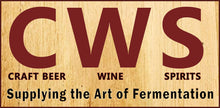carolinawinesupply
Bactiless
Couldn't load pickup availability
Acetic acid and lactic acid bacteria control
Bactiless™ is a 100% natural, non-allergenic form of chitin-glucan from a non-GMO strain of Aspergillus niger, which has been formulated to help control bacterial populations in wines post-fermentation. Bactiless helps to lower the viable acetic acid and lactic acid bacterial (LAB) populations, while having minimal effect on yeast populations. This polysaccharide can be used to stabilize wines post malolactic fermentation, or it can be used to inhibit malolactic fermentation. There is a minimum contact time of 10 days and the wine should be racked post treatment. Bactiless helps to avoid the negative sensory impact caused by spoilage bacteria such as acetic acid and biogenic amines. Its antibacterial effect can be enhanced with the use of SO2, but it does not replace it, as Bactiless doesn’t have an antioxidant or antifungal effect. However, Bactiless can help to reduce the amount of SO2 needed to control lactic and acetic bacteria population.
Bactiless™ has been administratively approved for continual use under 27 CFR 24.250. As a result of updated TTB regulations, customers using Bactiless do not have to file an application for use. It is not, at this stage, permitted for use in wines destined for export.
Usage: Suspend Bactiless in 5-10 times its weight in cool water or wine (Bactiless is insoluble, so it will not go into solution). Bactiless should be mixed to obtain a homogenous addition. Leave Bactiless in contact with the wine for 10 days and then conduct a clean racking. If malolactic fermentation is desired, Bactiless should not be added until after MLF is complete.
To determine the effectiveness, a period of 20-30 days post racking should be respected before microbial analysis. This is regardless of method used; traditional plating, microscopic observations or RT-PCR.
Storage: Dated expiration. Store in a dry environment below 25°C (77°F).
Recommended Dosage
| 200-500 ppm | 20-50 g/hL |
| 1.67-4.16 lb/1000 gal | 45-113 g/60 gallon barrel |
Share


